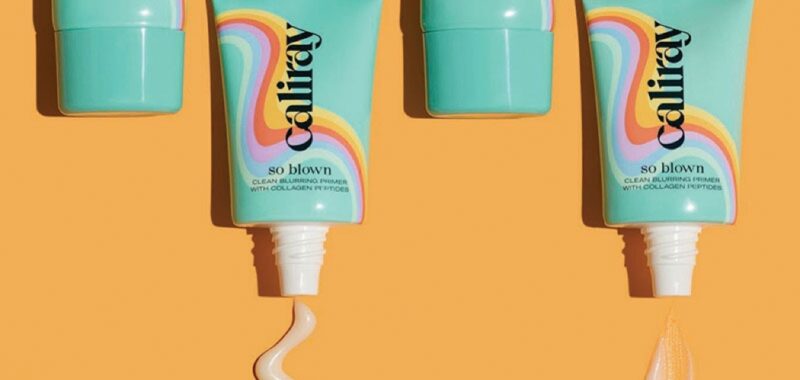Element Beauty Group partnered with Oco, part of Canadian firm Carbon Upcycling Technologies, to develop the beauty packaging material from captured CO2 and post-consumer recycled material (PCR). Recently launched at Sephora with Californian makeup brand Caliray, the packaging boasted improved strength, durability and recycling potential whilst contributing to a reduction in greenhouse gases because of the captured carbon contained within it.
Carbon waste + plastic waste
So, was this merge of waste materials the future for super-green cosmetics packaging? Premium Beauty News spoke to Nick Gardner, co-founder of Element Beauty Group, who said combining captured carbon with waste plastic certainly “makes more sense” for industry.
“There is a certain amount of energy used by the [carbon] trapping process, if you will, just to trap that CO2 (…) so, I would say that using it in waste plastics is a very good use,” Gardner said, versus blending it with virgin plastics or other packaging materials.
Whilst captured carbon was already being integrated into a wide range of materials today – from virgin plastics to fragrances and even concrete – the executive said blending it into post-consumer recycled (PCR) materials for packaging increased the green impact even further.
“For plastics, in general, recycling rates are very, very low in the beauty industry,” he said. “…My thought was: if this is going to end up in landfill (…) wouldn’t it be better that we effectively create a carbon trap? A ’sink’, if you will. So, we proceeded with that,” he said. “…We’re making better waste.”
But beyond this, Gardner said the carbon-dense additive also strengthened the PCR beauty packaging for general use, making it more durable and more suitable for existing mechanical recycling systems, if the product reached these centres.
“We’re trying to create a more efficient recycling stream and more efficient use of that waste.”
A carbon capture future?
Gardner said carbon capture in its many forms remained a “massively interesting industry” full of promise. “I genuinely believe that it is the future, and if anything can be done for global warming, we have to remove and capture CO2. That, and methane, obviously.”
For Element Beauty, the source of captured carbon had been important in this project, he said. Via its partnership with Oco, the company was using sequestrated carbon from large-scale power plants – emissions that would otherwise enter the atmosphere – as opposed to CO2 already in the air. Using a patented process, this CO2 was then blended with inorganic feedstock magnesium silicate to create a powder additive that could be integrated into post-consumer recycled plastics.
Whilst several feedstock compounds had been trialled, Gardner said magnesium silicate had been finally selected because it was “very inert” and “readily available”, as well cheaply produced in a non-intensive way.
After around 1.5 years of development, from ideation to final filling and testing, Element Beauty had developed a range of beauty packaging options that integrated between 15-30% of trapped carbon, including mascaras, compacts, lipglosses and tubes.
Upscale challenges ahead
Asked how much interest there was amongst industry for this type of packaging, Gardner said: “I’d like to think there is a lot.”
However, he said there remained clear challenges ahead for the scale up of such packaging.
Whilst the carbon-captured PCR material was an easy ’drop in’ to existing packaging manufacturing processes, Gardner said there were many different companies involved in a typical beauty brand’s supply chain and not all were on-board with change. On top of this, the story of integrating captured carbon into a packaging material wasn’t entirely straightforward for beauty consumers to understand, he said, so the consumer education piece would be crucial to future success.
Looking ahead, the executive said Element Beautywas open to sharing its process with competitors, working with them for a small royalty, because this would mean even more CO2 could be sequested and integrated into beauty packaging at scale. “What I would like to see is large-scale companies looking at this and actually using it, but at scale.”
The company also wanted to stretch beyond beauty, he said, to fashion and even food and drink – “lots of other industries”.
For the time being, though, Gardner said there remained plenty of promise to scale-up and create impact in beauty with this packaging material, particularly for smaller cosmetic products, like fragrance caps, eyeshadow palettes, compacts, lipsticks and mascaras. “There’s almost nothing it can’t be in,” he said.

